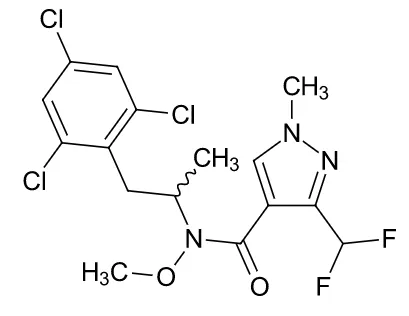
paź . 17, 2024 04:00 Back to list
Exploring Various Brands of Chlorpyrifos and Their Applications in Agriculture
Understanding Chlorpyrifos Brands Applications and Safety Concerns
Chlorpyrifos is a widely used pesticide that belongs to the organophosphate family. Originally developed in the 1960s, it has been extensively utilized in agriculture to control a variety of pests on numerous crops, including fruits, vegetables, and grains. While it has proven effective in pest management, concerns have arisen regarding its safety and potential health effects, leading to significant scrutiny and regulatory actions across the globe. In this article, we will explore the different brands of chlorpyrifos, its applications, and the safety issues associated with its use.
Chlorpyrifos Brands and Their Applications
Several brands manufacture chlorpyrifos products, each formulated for specific agricultural needs. Among the most well-known brands are Lorsban, Dursban, and Cobalt.
1. Lorsban One of the most recognized brands, Lorsban is commonly used for controlling a wide range of pests, including aphids, leafhoppers, and beetles. It is typically applied to crops like corn, soybeans, and cotton. Farmers appreciate Lorsban for its effectiveness and the flexibility it provides in integrated pest management strategies.
2. Dursban This brand is also noted for its versatility in combating a variety of insect pests across numerous crops. Dursban has a track record of usage in both agricultural settings and household pest control. However, due to regulatory concerns, its availability has been restricted in many residential applications.
3. Cobalt This is a more recent formulation of chlorpyrifos, designed to offer better control of certain pest populations while minimizing non-target effects. It is particularly effective on pests that have become resistant to other insecticides. Cobalt is often applied to specialty crops like fruits and vegetables.
Safety Concerns Surrounding Chlorpyrifos
Despite its widespread use and effectiveness, chlorpyrifos has faced intense criticism due to potential health risks. Research has linked chlorpyrifos exposure to various health issues, particularly affecting children. Studies have indicated that exposure can lead to developmental delays, reduced IQ, and other long-term health problems. As a result, several countries have moved to restrict or ban its use altogether.
In the United States, the Environmental Protection Agency (EPA) has undergone extensive reviews of chlorpyrifos, considering both its agricultural benefits and associated risks. In 2021, the EPA announced a ban on the use of chlorpyrifos on food crops, citing significant health risks and a lack of safe application practices. This decision has been part of a broader movement toward safer alternatives in pest management.
chlorpyrifos brands

Regulatory Landscape
The regulatory landscape for chlorpyrifos varies significantly across different regions. In Europe, the use of chlorpyrifos has been heavily restricted since 2020, with many countries adopting a complete ban on its application in agriculture. This global push towards the reduction of harmful pesticides has prompted researchers and farmers alike to explore alternative pest control methods, such as integrated pest management (IPM) and organic farming practices.
Alternatives to Chlorpyrifos
With increasing concern over the safety of chlorpyrifos, there has been a notable shift towards alternative pest management strategies. Some of the alternatives include
1. Biological Control Utilizing natural predators and parasites to manage pest populations can be an effective and sustainable method of pest control.
2. Insect Growth Regulators (IGRs) These substances disrupt the normal growth and development of insects, reducing their populations without the harmful effects associated with traditional pesticides.
3. Plant-based Pesticides Extracts from plants such as neem or pyrethrum can provide effective pest control while being less toxic to humans and the environment.
Conclusion
Chlorpyrifos remains a significant tool in agriculture for pest management, but its safety and environmental concerns have prompted a reevaluation of its use. With various brands available in the market, each offering unique formulations suited for specific agricultural needs, it is important for farmers and agricultural professionals to stay informed about the safety regulations and available alternatives. As the industry moves towards more sustainable practices, finding a balance between effective pest control and health safety will be crucial. In this evolving landscape, innovation will play a key role in developing safer and more environmentally friendly pest management solutions.
-
Azoxystrobin: Broad-Spectrum Fungicide Solutions
NewsAug.11,2025
-
Best EPA Boscalid: Superior Crop Fungicide for Max Yields
NewsAug.11,2025
-
Best Willowood Imidacloprid: Superior Pest Control Solutions
NewsAug.10,2025
-
Best EPA Boscalid Fungicide: Ultimate Crop Protection
NewsAug.09,2025
-
Cyprodinil Fungicide: Broad-Spectrum Crop Protection
NewsAug.08,2025
-
Tembotrione Herbicide: Advanced 8% OD for Broad Spectrum
NewsAug.07,2025
